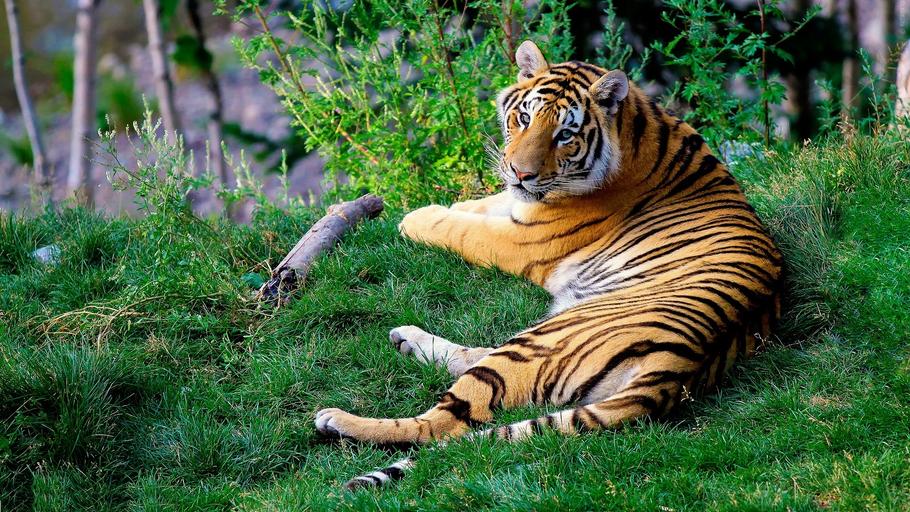Bengal Tiger: Majestic and Endangered Species of India
Bengal Tiger: is one of the most majestic and endangered species of India. It is the national animal of India and is found mainly in the Indian subcontinent. It is the most numerous of all tiger species and is the second largest living cat in the world. The Bengal Tiger is an apex predator and is known for its power and strength. It is an important part of the ecosystem and plays a vital role in maintaining the balance of nature. Unfortunately, due to poaching and habitat loss, the Bengal Tiger is now listed as an endangered species. Conservation efforts are being made to protect this species and ensure its survival.
The History and Evolution of the Bengal Tiger: How the Species Has Adapted to Survive in India
The Bengal tiger (Panthera tigris tigris) is a subspecies of tiger that is native to the Indian subcontinent. It is the national animal of India and Bangladesh, and is one of the most iconic and recognizable animals in the world. The Bengal tiger is an apex predator, and is the largest of the four big cats found in India. The Bengal tiger has a long and fascinating history in India. It is believed that the species has been present in the region for at least 12,000 years, and it is thought to have been revered by the ancient Indus Valley Civilization.
The species was also a popular subject in Hindu mythology, and was often depicted in art and literature. In the modern era, The Bengal tiger has faced a number of threats, including habitat loss, poaching, and human-wildlife conflict. As a result, the species has been listed as endangered by the International Union for Conservation of Nature (IUCN). Despite these threats, the Bengal Tiger has managed to survive and even thrive in India.
The Bengal Tiger: This is due in part to the efforts of conservationists and wildlife organizations, who have worked to protect the species and its habitat. In addition, the Bengal tiger has adapted to its changing environment in a number of ways. For example, the species has become more tolerant of human presence, and has been known to live in close proximity to villages and towns. This has allowed the species to access new sources of food, such as livestock and crops. The Bengal tiger has also become more adept at hunting in the night, which has allowed it to avoid human contact. The Bengal tiger has also become more efficient at hunting its natural prey, such as deer, wild boar, and antelope.
This has allowed the species to survive in areas where its natural prey is scarce. Overall, the Bengal tiger has managed to survive and even thrive in India despite the numerous threats it faces. This is due in part to the efforts of conservationists and wildlife organizations, as well as the species’ ability to adapt to its changing environment. As a result, the Bengal tiger remains an iconic symbol of India’s natural beauty and biodiversity.
The Role of Conservation Efforts in Protecting the Bengal Tiger from Extinction
The Bengal tiger (Panthera tigris tigris) is one of the most iconic species of the animal kingdom, and its survival is of paramount importance. Unfortunately, the Bengal tiger is facing a very real threat of extinction due to a variety of factors, including habitat loss, poaching, and human-wildlife conflict.
Conservation efforts are essential to protecting the Bengal tiger from extinction, and there are a number of initiatives that have been implemented to help ensure the species’ survival. One of the most important conservation efforts for The Bengal tiger is the protection of its habitat. The tiger’s natural habitat is the tropical and subtropical forests of India, Bangladesh, Nepal, Bhutan, and Myanmar.
Bengal Tiger: These forests are being destroyed at an alarming rate due to deforestation, agricultural expansion, and urbanization. To protect the Bengal tiger’s habitat, conservationists have established a number of protected areas, such as national parks and wildlife sanctuaries, where the tiger can live and breed in relative safety. Another important conservation effort is the prevention of poaching. Poaching is a major threat to the Bengal Tiger, as poachers hunt the animal for its fur, bones, and other body parts, which are used in traditional medicines and other products.
deforestation, agricultural expansion, and urbanization. To protect the Bengal tiger’s habitat, conservationists have established a number of protected areas, such as national parks and wildlife sanctuaries, where the tiger can live and breed in relative safety. Another important conservation effort is the prevention of poaching. Poaching is a major threat to the Bengal Tiger, as poachers hunt the animal for its fur, bones, and other body parts, which are used in traditional medicines and other products.
Bengal Tiger: To combat poaching, conservationists have implemented a number of anti-poaching initiatives, such as increased patrols, the use of camera traps, and the establishment of anti-poaching units.
Bengal Tiger: Finally, conservationists are working to reduce human-wildlife conflict. As human populations expand into tiger habitats, the animals are increasingly coming into contact with people, leading to conflict and the potential for injury or death.
Bengal Tiger: To reduce this conflict, conservationists are working to educate local communities about the importance of coexisting with wildlife, as well as implementing initiatives such as the construction of wildlife corridors and the relocation of tigers to safer habitats. In conclusion, conservation efforts are essential to protecting the Bengal tiger from extinction.
Bengal Tiger: By protecting the tiger’s habitat, preventing poaching, and reducing human-wildlife conflict, conservationists are working to ensure the species’ survival for generations to come.
Bengal Tiger: Exploring the Unique Characteristics of the Bengal Tiger and Its Impact on the Indian Ecosystem
The Bengal tiger (Panthera tigris tigris) is a majestic and powerful animal that is native to the Indian subcontinent. It is the national animal of India and Bangladesh, and is one of the most iconic species in the world. The Bengal tiger is an apex predator and plays a vital role in maintaining the balance of the Indian ecosystem. The Bengal tiger is the largest of the tiger subspecies, with males weighing up to 300 kilograms and females up to 200 kilograms.
It has a distinctive orange-brown coat with black stripes, and its white belly and throat are unique among tigers. The Bengal tiger is an ambush predator, and its powerful jaws and sharp claws make it a formidable hunter. The Bengal tiger is an apex predator, meaning that it is at the top of the food chain and has no natural predators. It is an important part of the Indian ecosystem, as it helps to keep the population of its prey species in check. This helps to maintain the balance of the ecosystem and prevents overgrazing of vegetation.
The Bengal tiger is also an important part of Indian culture and mythology. It is seen as a symbol of strength and power, and is often depicted in Hindu art and literature. The tiger is also an important part of the Indian economy, as it is a popular tourist attraction and its fur is used to make clothing and other items.
The Bengal tiger is an endangered species, with only around 2,500 individuals remaining in the wild. The main threats to the species are habitat loss, poaching, and human-tiger conflict. Conservation efforts are underway to protect the species, but more needs to be done to ensure its survival. In conclusion, the Bengal tiger is a unique and powerful animal that plays an important role in The Indian ecosystem. It is an apex predator that helps to maintain the balance of the ecosystem, and it is also an important part of Indian culture and mythology. Unfortunately, the species is endangered and more needs to be done to protect it.
Conclusion
The Bengal Tiger is a majestic and endangered species of India that is facing a number of threats to its survival. It is estimated that there are only around 2,500 Bengal Tigers left in the wild, and their numbers are declining due to poaching, habitat loss, and human-wildlife conflict. Conservation efforts are underway to protect this species, but more needs to be done to ensure its long-term survival. The Bengal Tiger is an iconic species of India and its protection is essential for the future of the country’s biodiversity.
Read More About Tigers From Wikipedia




